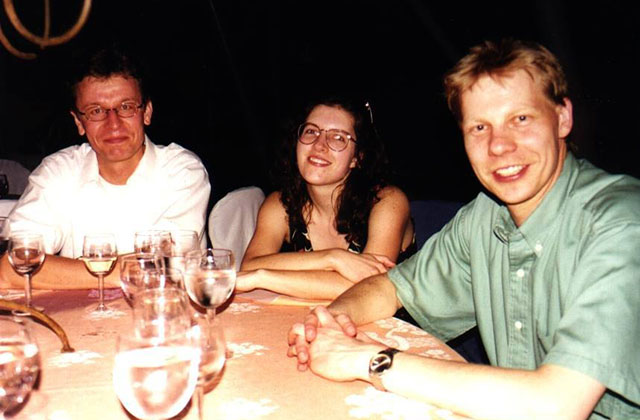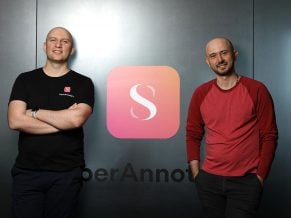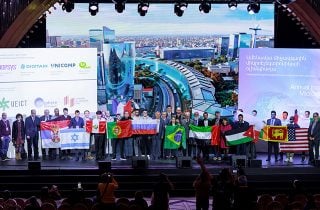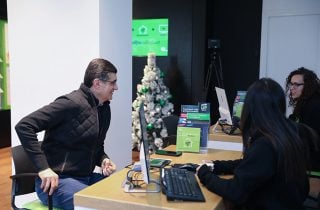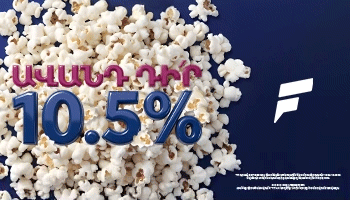
“Astronomy is historically well established and one of the thriving sciences in Armenia”: Bernhard Brandl
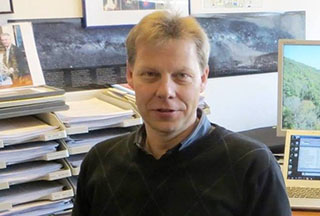
Prof. Brandl recently celebrated his 50th anniversary. And by that occasion 168.am had an interview with Prof. and discovered his relations with Armenia.
Prof. Brandl was born in Netherlands. In 1991 he graduated from DESY (Germany) and obtained his Ph.D. degree in 1996 at MPE / LMU Munich (Germany). In 1996-2000 he was Research Associate, and in 2000-2003, Senior Research Associate at Cornell University (Ithaca, N.Y., USA). In 2003- 2015 he was Associate Professor, and since 2015 he is Full Professor at Leiden University & Technical University Delft (Netherlands). Prof. Brandl’s scientific interests include massive star clusters and starbursts, infrared spectroscopy and instrumentation. He is a member of the instrument teams of Spitzer-IRS, JWST-MIRI and EELT-MIDIR.
– Why have you chosen this branch of science, Astronomy?
– I’ve always been fascinated by black holes, galaxies, and the expanding Universe. However, I have actually studied physics, and entered the field of astronomy through the back door of astronomical instrumentation. I switched from particle physics to astronomybecause, at least at the time, astronomical research was organized in smaller groups where younger scientists could make a more significant impact, than in the huge consortia of particle physicists. I must admit that I have never regretted my change to astronomy. But it also meant that I had to learn astronomy “on the fly”. I am still learning “classical” astronomy when preparing lectures in areas outside my field of research.
– Which of your works or inventions do you consider to be the most important?
– My main science contributions are in the area of the interstellar medium in starburst galaxies, mostly on the basis of observations with Spitzer and the VLT. However, my most significant contributions are probably in the area of instrumentation, most notably to JWST-MIRI, and most recently, to establish METIS – a mid-infrared instrument for which I am the Principal Investigator – as one of the first three science instruments on the E-ELT.
– How does your work affect on your social and family life?
– It is clear that a career in astronomy cannot be pursued with a regular 5 days per week, 8 hours per day, work schedule. Luckily, my family has always been very flexible and supportive, and accepting my frequent absence due to travel, moving to other countries, and working on weekends and evenings. On the other hand, working as a university astronomer usually provides flexible work hours to accommodate family or school events.
– What is your advice to those young people who have chosen science? And what about those who have chosen, especially Astronomy?
– If you really like astronomy, go for it. You should be aware that there are many more students than permanent positions, so not everyone will find a job in astronomy. However, let this worry not limit your enthusiasm about the work. Try to find a project/group that you really like and put all your efforts into that – but don’t worry every day whether your career is still on track. Good people are always in demand, and astronomers learn the basics of scientific thinking, project organization, modern technologies, and computer programming. Astronomers arehence good candidates for jobs outside of academia as well.
– More often do you use computers than telescopes?
– If “computers” means numerical astrophysics, then the answers is ‘no’ (although I am always impressed by the computational work of my colleagues at Leiden, Joop Schaye and Simon Portegies Zwart, who run simulations of the dark matter distribution in the Universe and complex N-body processes). But computers have become essentials in our professional lives even if we “just” work with data from telescopes. Most big observational projects even provide their own dedicates data reduction packages. Besides, no modern big telescope or instrument would work without computer control.
– Have you ever collaborated with Armenian astronomers? Do you plan to accomplish any scientific project with Armenia?
– I have worked with Areg Mickaelian on the correlation of infrared sources between the IRAS catalog and the Byurakan Surveys. And during my time at Cornell University, our department chair was Yervant Terzian. But this question is a good reminder to refresh my contacts.
– With 10-point scale, how do you assess the level of professional astronomy in Armenia? Would you suggest any solution how to improve it?
 – That’s a tricky question and I would prefer to not give a simple “grade”.I am quite impressed by the qualification and dedication of the astronomers – and in particular young astronomers – in Armenia. It appears to me that astronomy is historically well established and one of the thriving sciences in Armenia. Thriving sciences get more public attention and attract the brightest students, who contribute to keep it at a high level – a fortunate circle. On the other hand, since Galileo Galilei, astronomy has been foremost an observational science, which requires big and expensive telescopes. Almost every new observing facility, on the ground or in space, leads to new discoveries. In many countries, it is rather easy – even for young students – to work on brand new data from facilities like the VLT, ALMA, Keck, Gemini, or from ESA or NASA missions. In Europe, many countries are members in ESO, which provides a great advantage to realize your own observing program. In this regard, the hurdles for Armenian astronomers for direct access to world-class facilities are much higher, which makes it more difficult to achieve the same presence in scientific journals or public attention.
– That’s a tricky question and I would prefer to not give a simple “grade”.I am quite impressed by the qualification and dedication of the astronomers – and in particular young astronomers – in Armenia. It appears to me that astronomy is historically well established and one of the thriving sciences in Armenia. Thriving sciences get more public attention and attract the brightest students, who contribute to keep it at a high level – a fortunate circle. On the other hand, since Galileo Galilei, astronomy has been foremost an observational science, which requires big and expensive telescopes. Almost every new observing facility, on the ground or in space, leads to new discoveries. In many countries, it is rather easy – even for young students – to work on brand new data from facilities like the VLT, ALMA, Keck, Gemini, or from ESA or NASA missions. In Europe, many countries are members in ESO, which provides a great advantage to realize your own observing program. In this regard, the hurdles for Armenian astronomers for direct access to world-class facilities are much higher, which makes it more difficult to achieve the same presence in scientific journals or public attention.
– Are today’s Armenian astronomers recognized in the world?
– Yes, definitely.
– What new discoveries to expect from you in the future?
– Well, if I would already know that, it wouldn’t be a real discovery anymore, right? But I expect a lot of exciting data from the next big mission I am involved, the mid-infrared instrument (MIRI) aboard the James Webb Space Telescope (JWST). And, eventually, from METIS on the E-ELT.However, it is almost impossible to predict the science we’ll be doing in ten years. This uncertainty also makes science and astronomy so exciting.
Sona FARMANYAN





